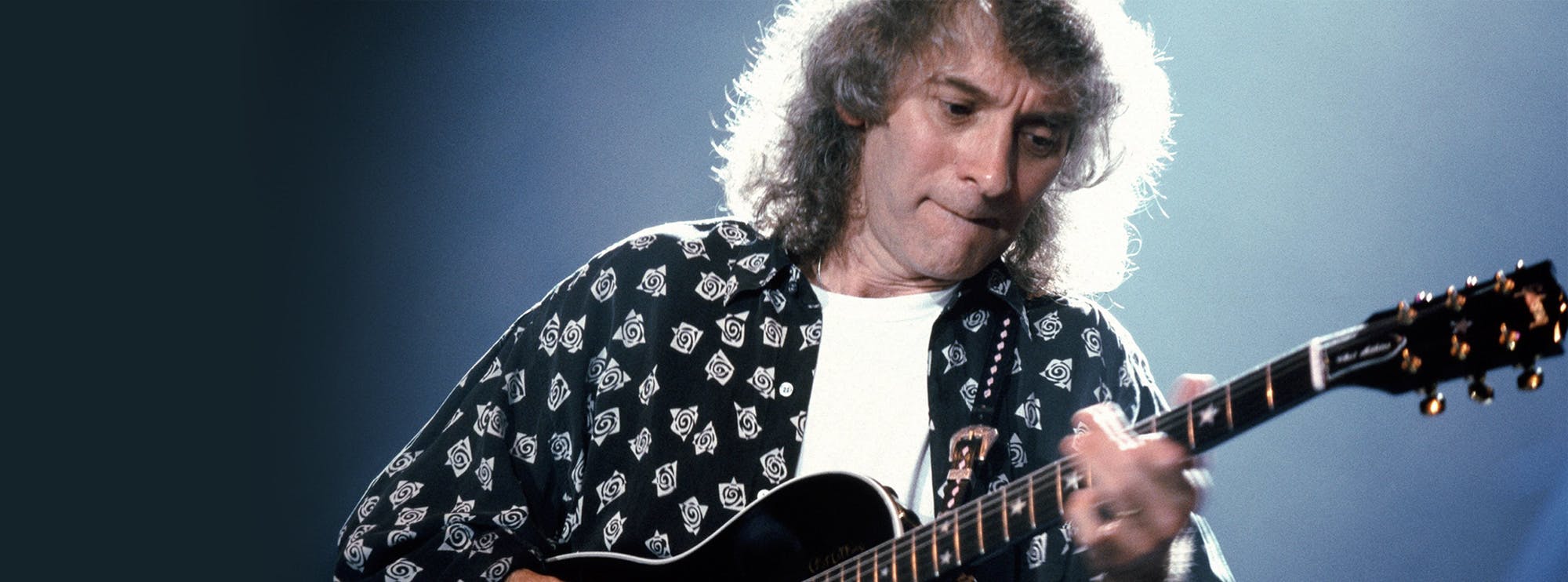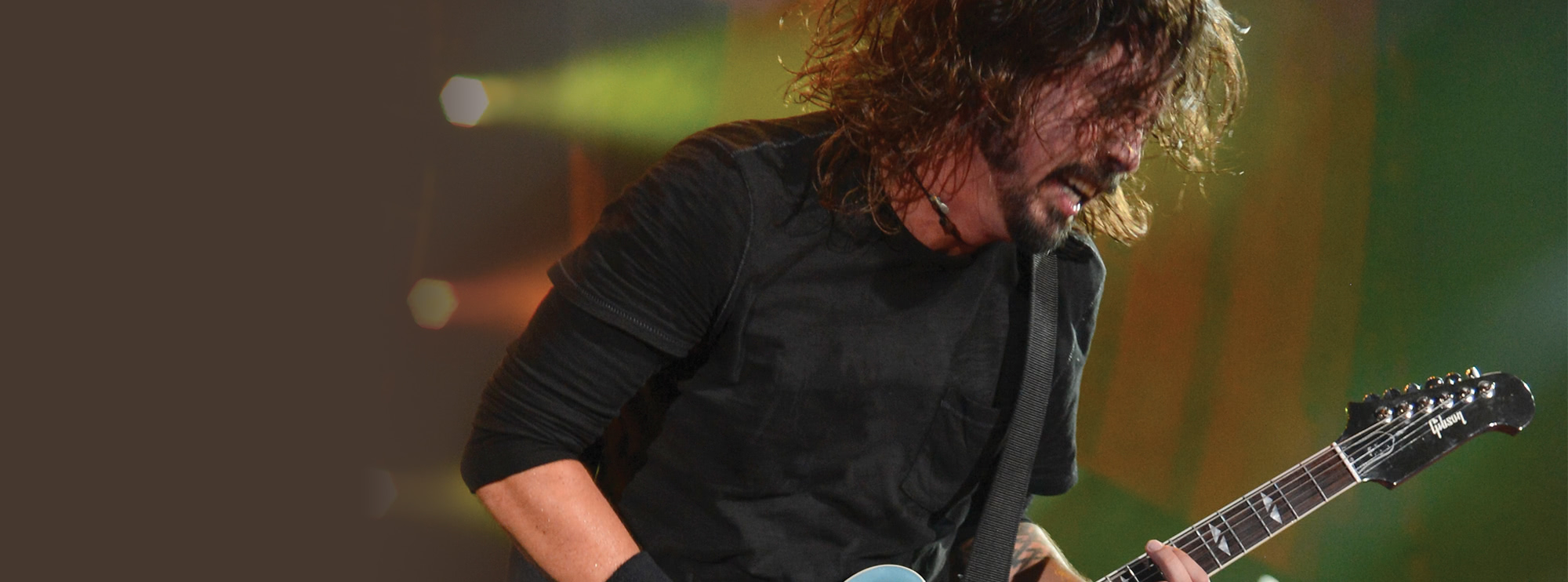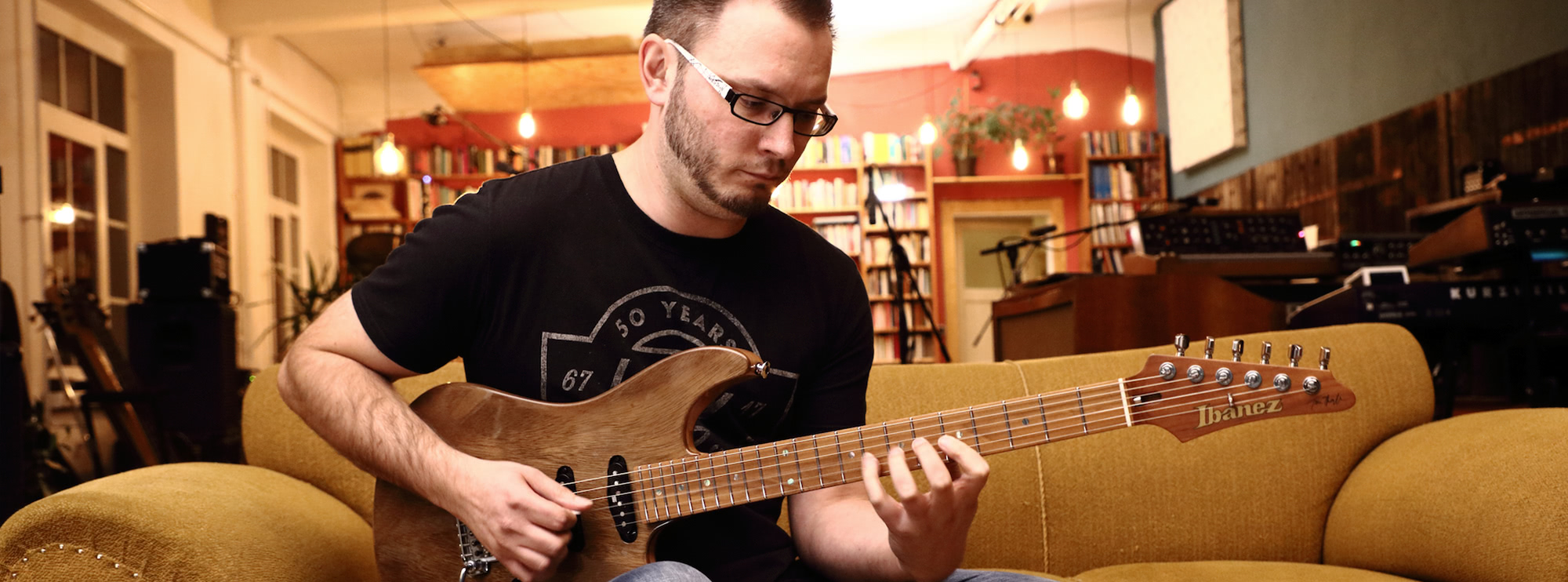Hailing from Teignmouth, Devon, Muse was formed in the mid '90s by Matt Bellamy, guitars, vocals and keyboards, Chris Wolstenholm, bass and backing vocals, and Dominic Howard, drums. Following the release of their 1999 debut "Showbiz", Muse have achieved global recognition with stand out albums such as "Origins of Symmetry", the hugely successful "Absolution", "Black Holes and Revelations" and "Drones". Their blend of alternative/hard rock, progressive rock, electronic and classical music has produced such revered tracks as "Muscle Museum". "New Born", "Plug In Baby", "Time is Running Out", "Hysteria", "Butterflies and Hurricanes", "Stockholm Syndrome", and "Supermassive Black Hole".
Although a band, much of their sound and style is courtesy of Matt Bellamy, who is a powerhouse of musical talent, and a virtuoso at his craft. His Jeff Buckley inspired vocal style makes use of falsetto melodies, while his guitar style borrows from the likes of Van Halen, Tom Morello and Jimi Hendrix. Matt is also an accomplished pianist, boasting impressive classical chops!
Muse's writing style is very broad. Although leaning towards alternative rock, their progressions are often inspired by classical music, utilising harmony from the Harmonic minor scale. Matt's guitar style is very unique; from crushing drop tuned fuzz soaked pedal tone riffs, to elegant arpeggio figures. Matt also has a very unorthodox approach to tone, using his signature Manson "Super Tele" loaded with either, plus a mixture of Humbucker, single coil, P90's or Sustainer pickups. His guitars also include an onboard fuzz circuit, as well as a touch screen "Chaos Pad" controller for controlling such effects as tremolo, and filter, manipulating the parameters by rubbing his fingers across the pad. Matt also is a dedicated user of the kill switch, and also the whammy pedal. For our Tech Session, I was slightly biased, borrow ideas from my favourite Muse tracks; it has to be said I am a fan of their aggressive/euphoric production. I used the tracks "New Born", "Plug In Baby", "Hysteria" and "Stockholm Syndrome" as inspiration, trying to blend the classical-inspired progressions, with heavy drop-tuned riffage, plus my own attempt at the Muse euphoria, in my production.
Bars 1-16 is the intro progression, and features a chord arpeggio progression using the chords of D minor, A minor, Bb, G minor and C#dim7th, with the latter chord shifting up a minor third resulting in an inversion. I would suggest using alternate picking throughout this section, which also makes for a great study, focusing in on both inside and outside picking. For this section I used a clean tone, but added a whammy effect pitched up by two octaves. Bars 15 -16 include a build up to the main riff, which should be performed with distortion and fuzz.
Bars 17-28 introduce the main riff, which is based around a figure performed in drop D tuning on the 6th string. This riff features ascending and descending melodies that pedal off of the drop D. For this riff I blended both amp distortion with a DI'd fuzz tone, as Matt will often record totally DI'd guitar for an abrasive/aggressive sound. If you use a multi effects unit, try routing a fuzz that doesn't pass through any amp emulation. Bars 25-28 feature the drop D5 chord stabs, as the drum groove shifts in feel for the verse progression.
Bars 29-44 features our verse, and includes the same chords s the intro, but performed with a tight staccato feel. I used the neck P90 pickup of my guitar for this section, with a slight overdrive for a "woody" natural tone. I also dialled in some room ambience with the guitar panned slightly to one side, adding space to the tone. Once again the distortion is kicked in for the pre-chorus build.
Bars 45-56 shows the chorus section, and here I really tried to capture the dark yet euphoric sound of Muse, blending strings and "Moog" arpeggios as in contrast to the heavy distortion/fuzz mixture. This section sees us using a climbing octave progression performed in harmony with an eighth note rhythm. The chord progression uses the chord of G minor, Em7b5, and D minor.
Bars 57-60 reintroduce the main riff for four bars, linking us to the solo section.
Bars 61-68 is a melodic arpeggio solo section. Here, the feel of the track changes, with the drums pulling back with a tom based groove, and the heavy guitars dropping out, giving space for the Mellotron choir. This featured an eighth note alternate picked arpeggio figure that outlines the chord progression heard in both the intro and verse. Here I have used an octave fuzz pedal.
Bars 68-76 illustrates the second half of our arpeggio section, with the figure shifting up a diatonic third to perform a harmony against the original figure.
Bars 77-92 conclude our track with a scale sequence line based around D Harmonic minor. This section also includes both the minor 7b5 arpeggio and the diminished 7th arpeggio performed in sequences. The final diminished 7th arpeggio ascends the neck in minor thirds. The feel of the track changes here with the drums ramping up to a heavy double time groove. This is probably the most interesting tone of the track. Once again I used my fuzz pedal, but with the octave off. In the post-stage I added a Sound Toy's doubler, similar to a vintage Eventide effect, plus I used a step filter, that was moving through different frequencies giving a sweeping effect. To really add to the sound, I used a Neve preamp plugin and drove it hard so that it clipped heavily.
Gear:
Matt uses a huge rig live, using a mixture of Marshall and Diezel amps. He also uses Kemper Profilers. He uses a plethora of effects from stomp boxes to rack equipment. He is also a huge fan of the fuzz effect. Although Matt uses a lot of guitars, he's best known for his Manson signature guitar, which he uses in many configurations including both 6 and 7 string versions. This guitar is now available at a slightly more affordable cost manufactured by Cort. More recently Matt has acquired Manson guitars.
For this session, I used my custom built Music Man Axis Super Sport with a DiMarzio DLX Plus in the bridge, and a P90 in the neck. I used my Boogie JP2'C into my Two Notes Studio rack. The fuzz was courtesy of the Wampler Fuzzstration octave fuzz pedal. I also used Line 6 Helix Native plugin as well as a variety of UAD and Steinberg plugins.
About The Tutor
Tutor Profile
Jamie Humphries
Jamie is one of the mainstays of LickLibrary, having a stream of hugely successful best selling DVDs, Jamie is best known as Brian May's sideman who he's played shows with all over the world. Aside from this Jamie is a hugely popular clinician working all over the world with Ernie...



